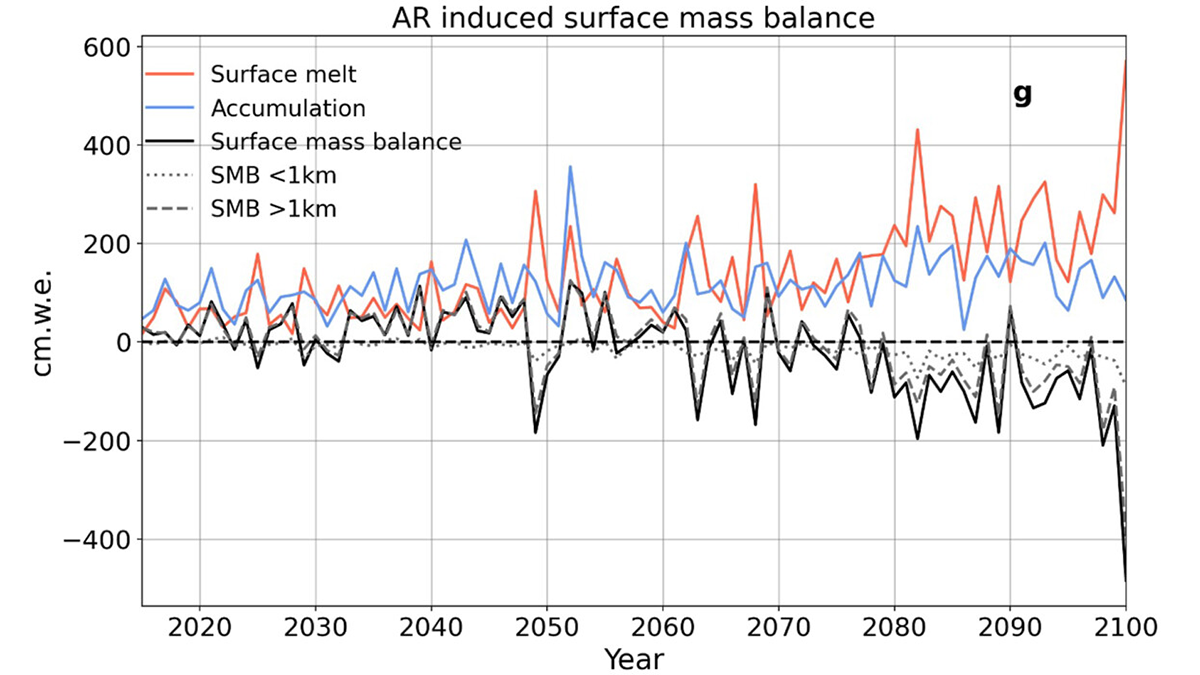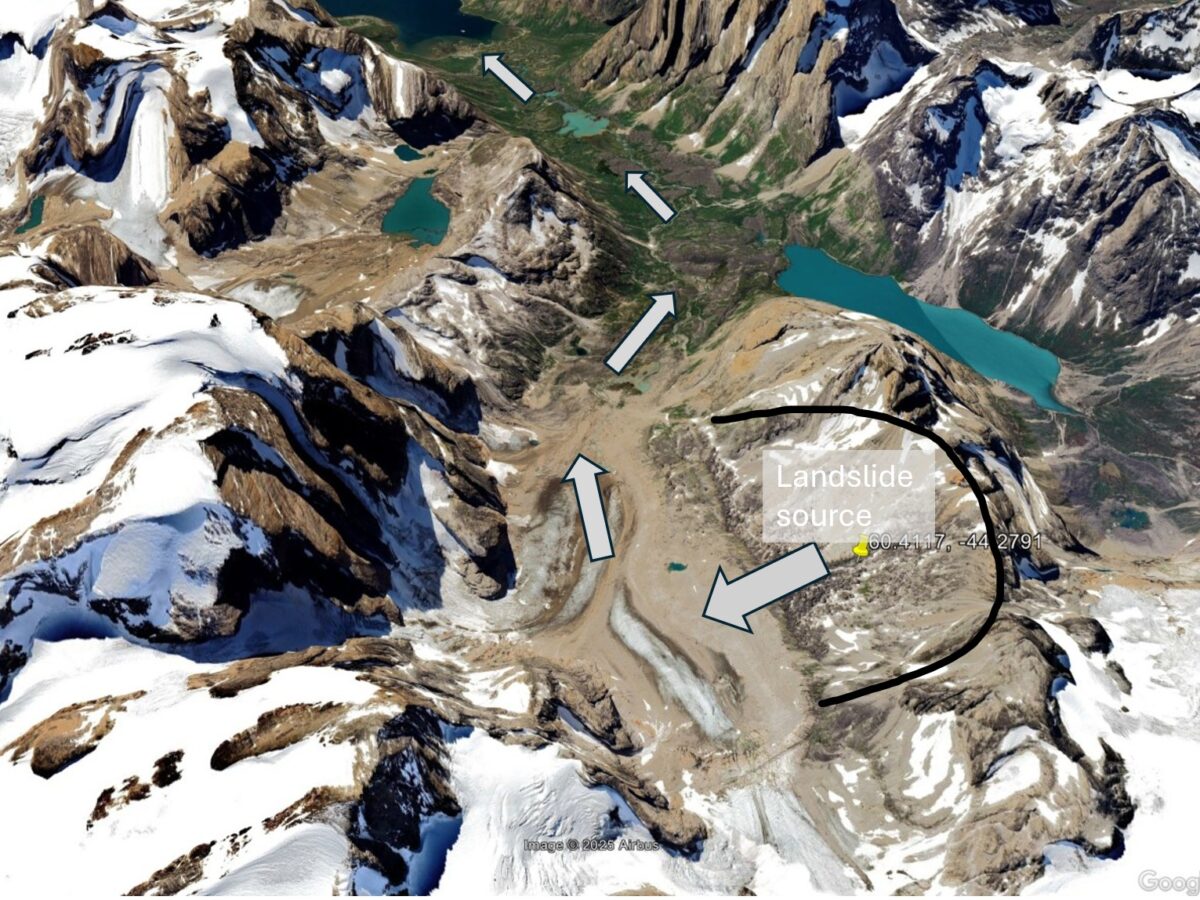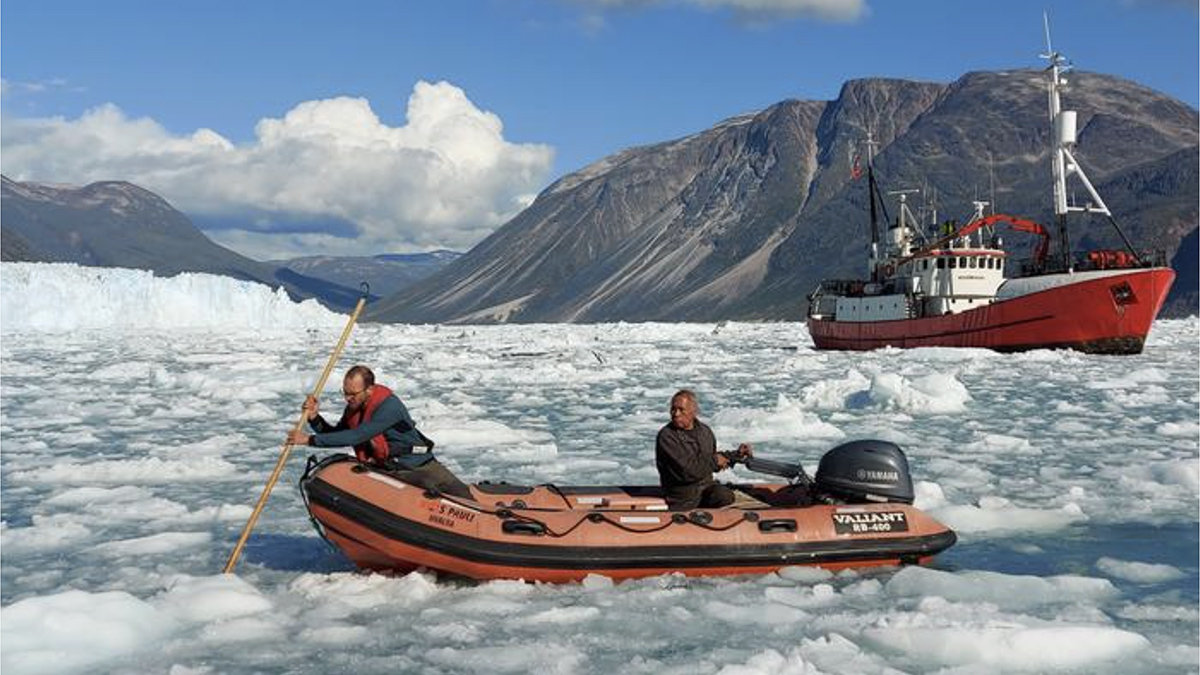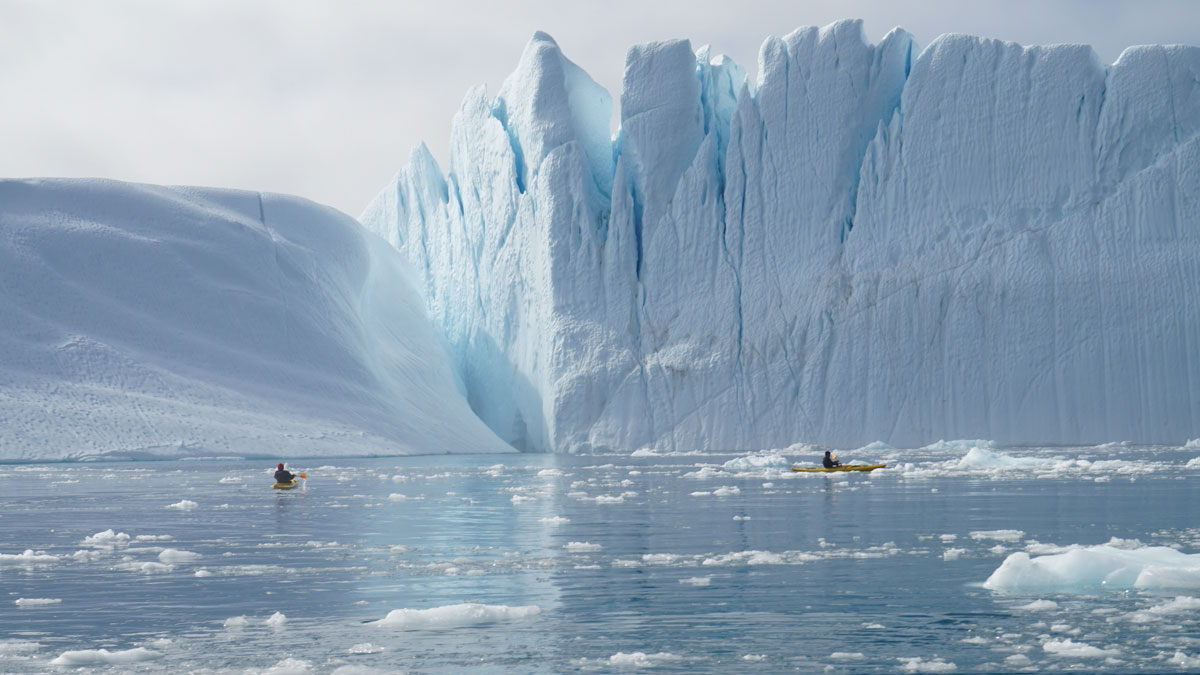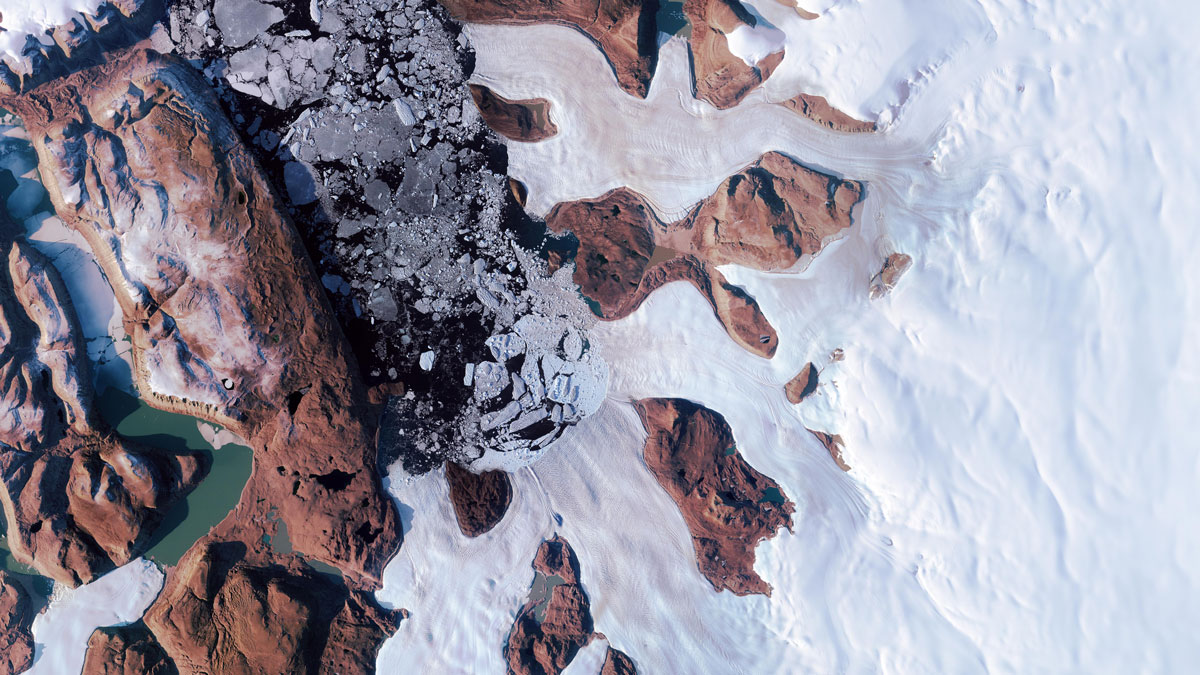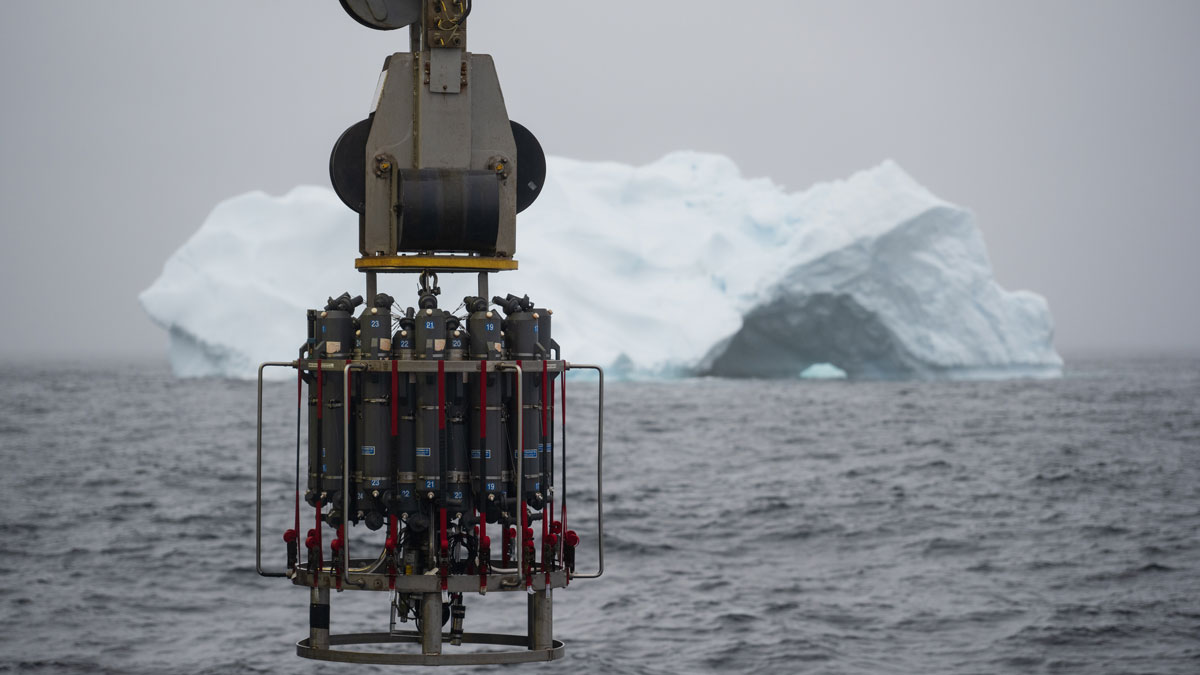New simulations reveal how atmospheric rivers influenced Greenland’s ice sheet during the Last Interglacial—offering clues to future melt in a warming world.
Greenland
The giant Tupaasat rock avalanche in South Greenland
A new paper describes a rock avalanche in Greenland about 10,900 years BP that had a volume of over 1 billion cubic metres and that travelled almost 16 kilometres. A fascinating paper (Pedersen et al. 2026) has just been published in the journal Geomorphology that describes a newly-discovered ancient rock avalanche in Greenland. This landslide, […]
A Fiber-Optic Cable Eavesdrops on a Calving Glacier
A glass thread strung along the bottom of a fjord captured the entire process of calving, from the cracking of ice to the breakup of bergs.
Underwater Glacier-Guarding Walls Could Have Unintended Consequences
Although they would likely impede the warm currents that melt glaciers, such walls would also likely block fish migration and nutrient upwelling, harming marine ecosystems and Greenland fisheries.
A Burst of Subglacial Water Cracked the Greenland Ice Sheet
When a lake beneath the Greenland Ice Sheet drained, its water burst through the ice sheet’s surface. This surprising event may have affected the movement of a nearby glacier.
New Satellite Adds Evidence of an Earth-Shaking Wave
A tsunami struck a fjord in East Greenland in 2023, ringing seismometers for nine straight days. A new satellite study provides the first observational evidence of the waves.
How Greenland’s Glacial Troughs Influence Ocean Circulation
Glacial troughs in Antarctica promote mixing of warm and cold water, affecting global climate. A new study explores whether the same is true in troughs along Greenland’s coastline.
Crevasses on the Greenland Ice Sheet Are Growing
High-resolution 3D maps show crevasse volume is increasing across most of the Greenland Ice Sheet as it accelerates toward the ocean, which could affect future ice loss and sea level rise.
Tiny Icequakes Ripple Through Greenland’s Largest Ice Stream
Seismologists made an accidental discovery on the Northeast Greenland Ice Stream, changing the way glaciologists understand how ice moves.
Extreme Heat and Rain Turned These Arctic Lakes Brown
Scientists are stunned by the changes in multiple Arctic lakes, all transforming in the same way.

